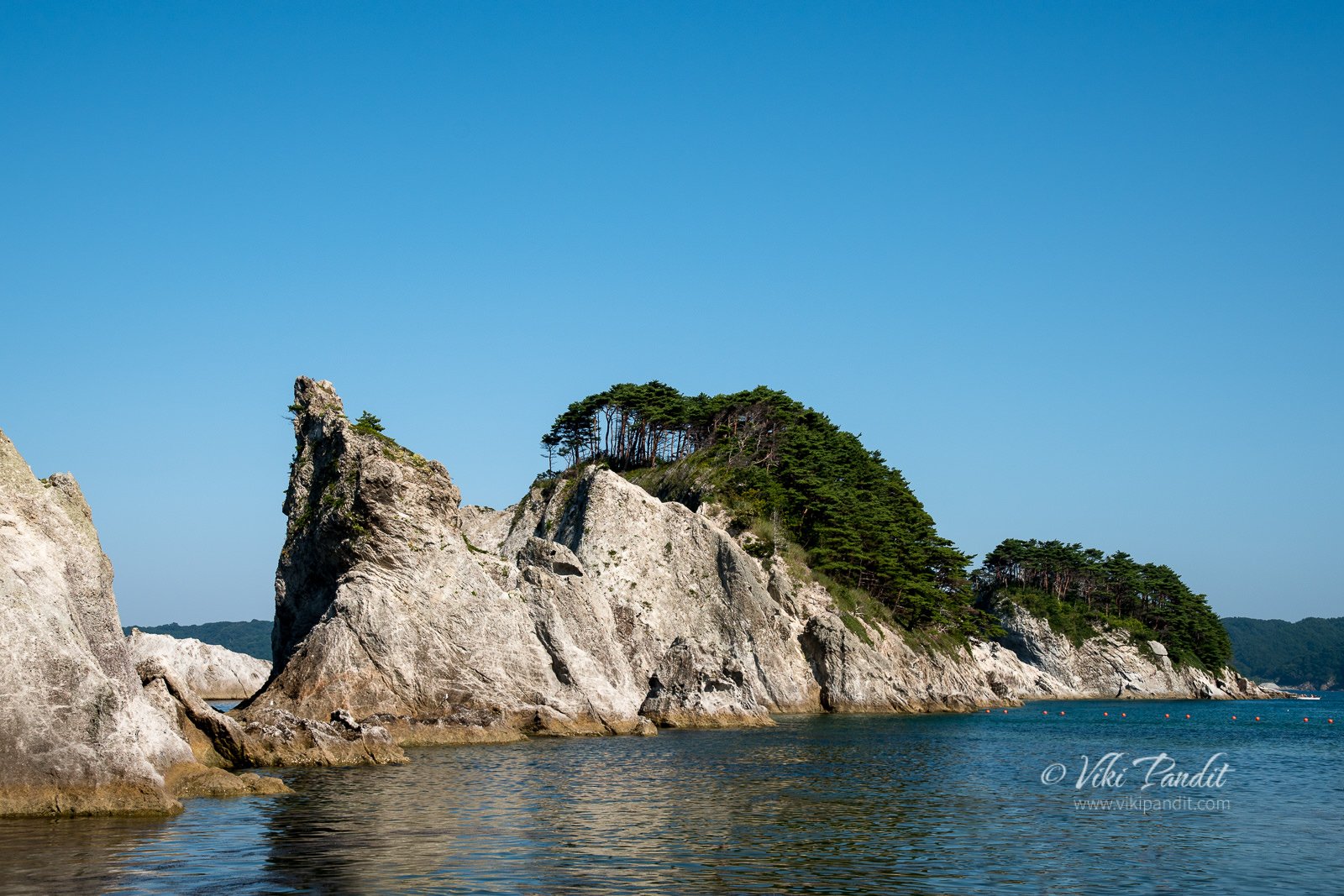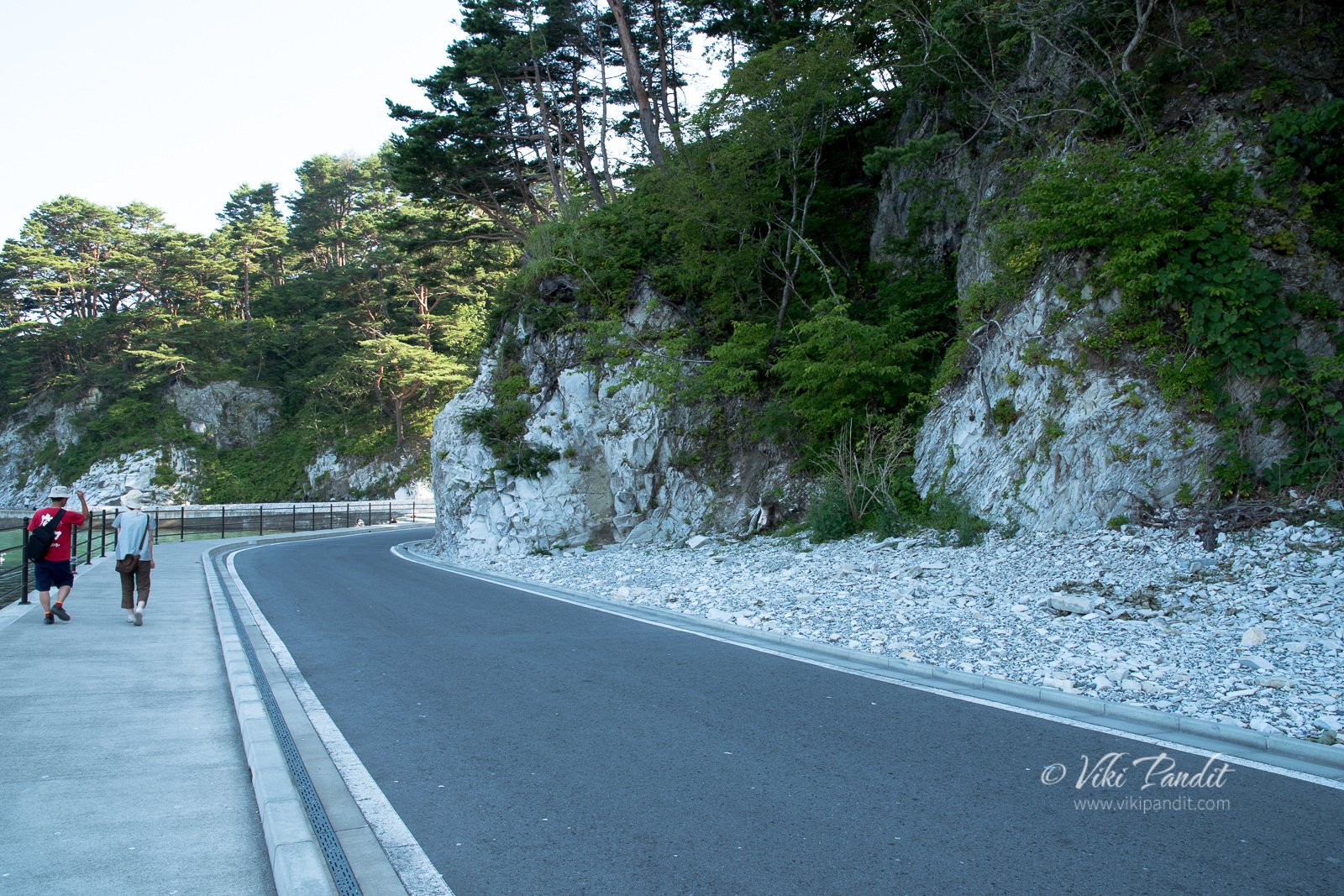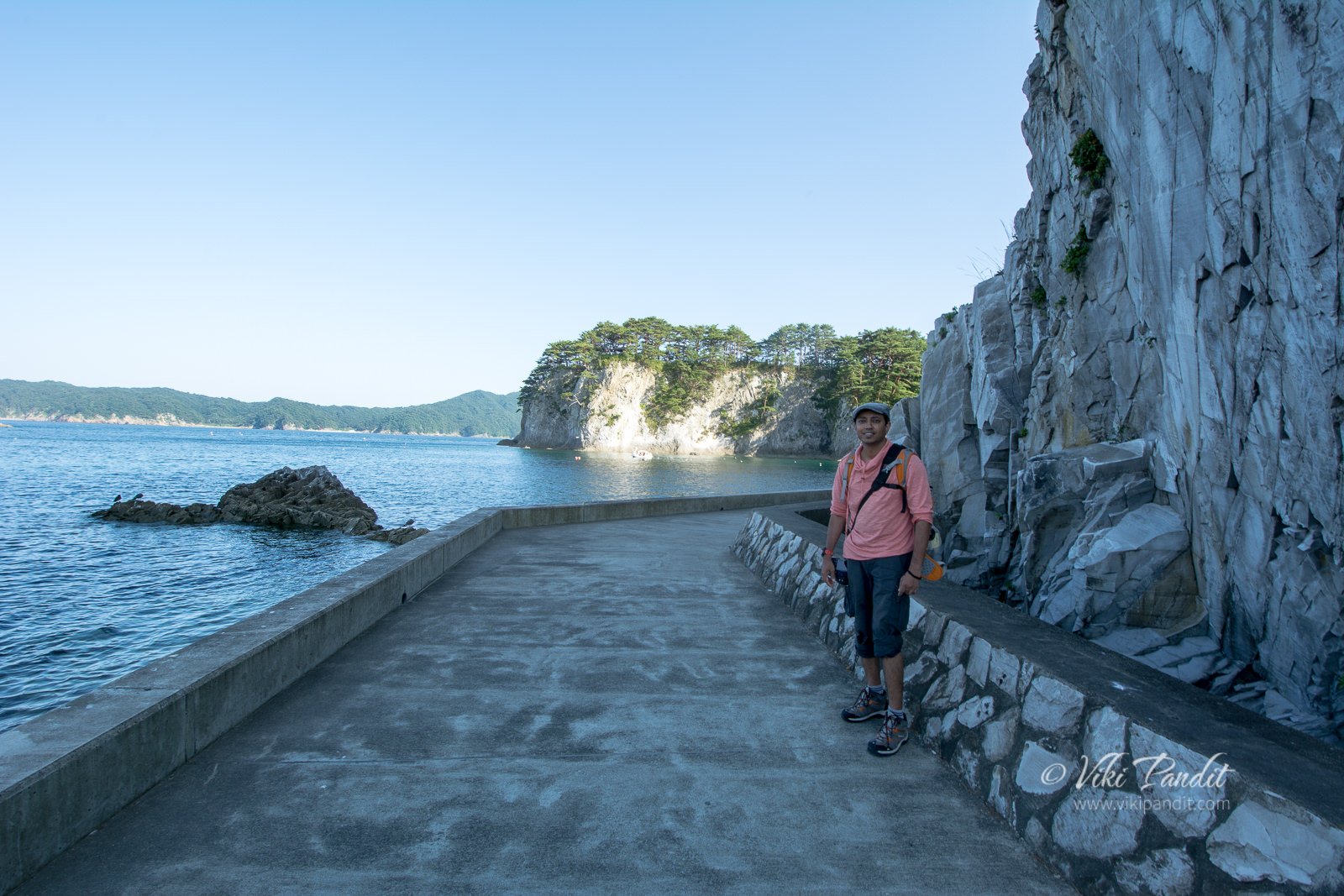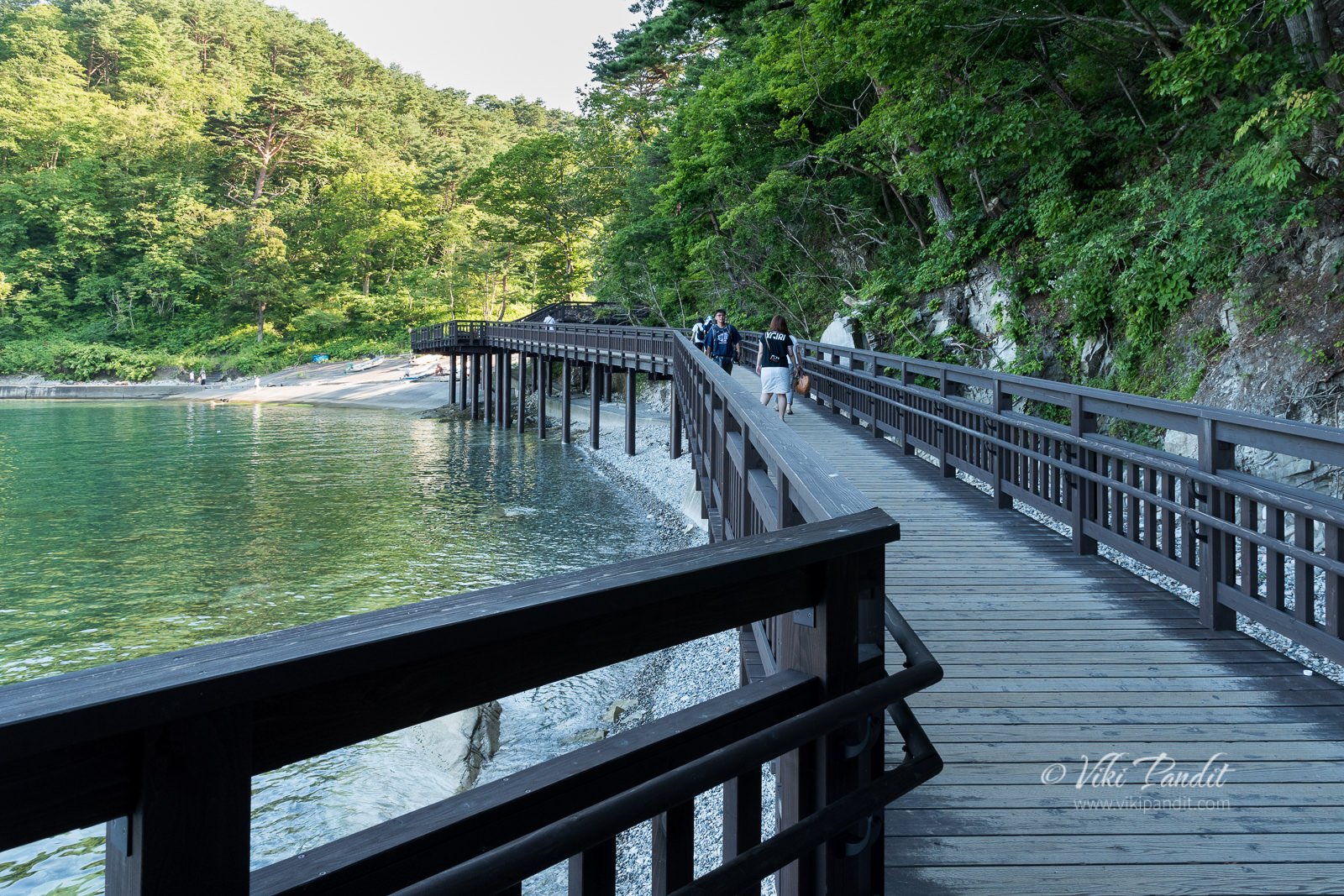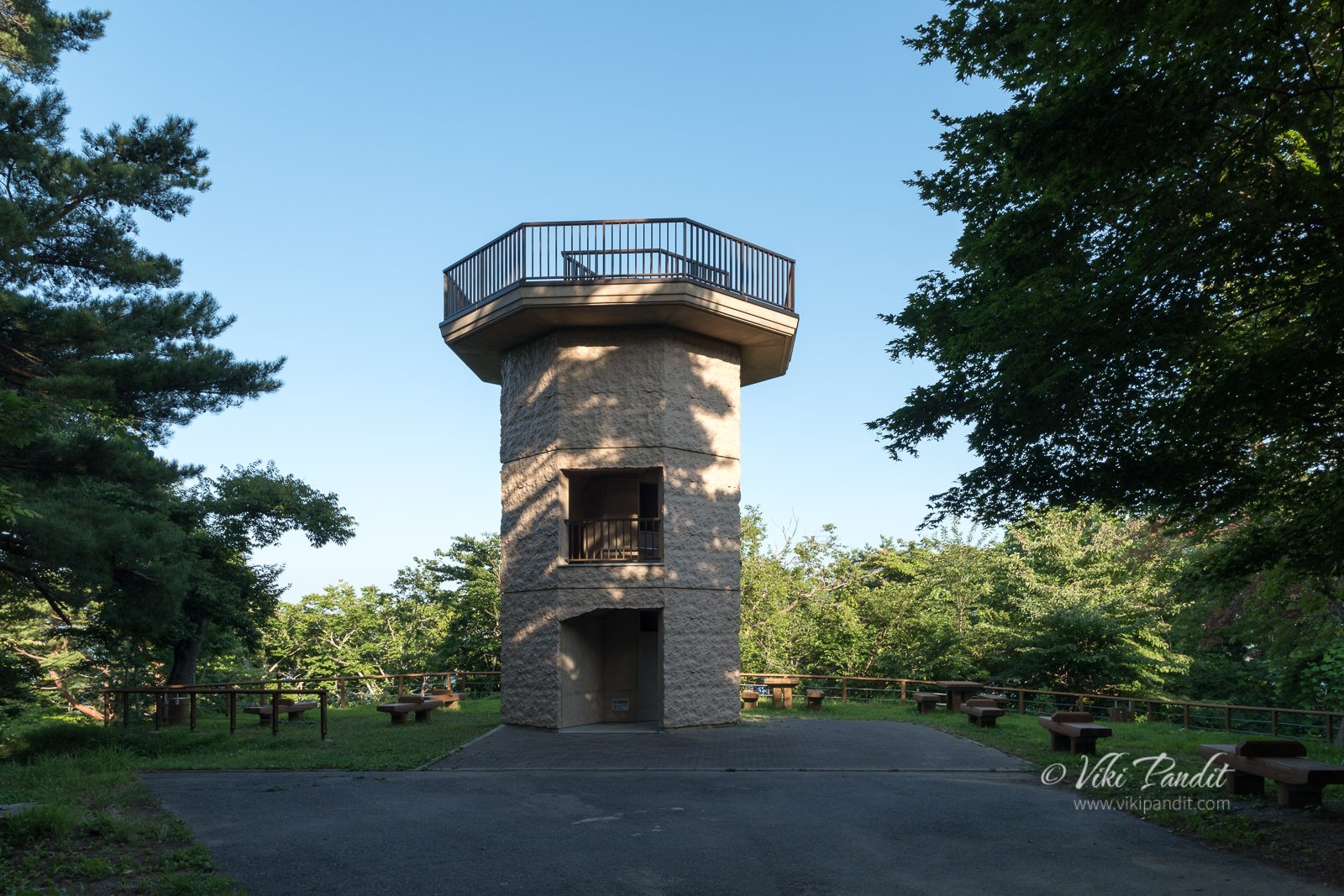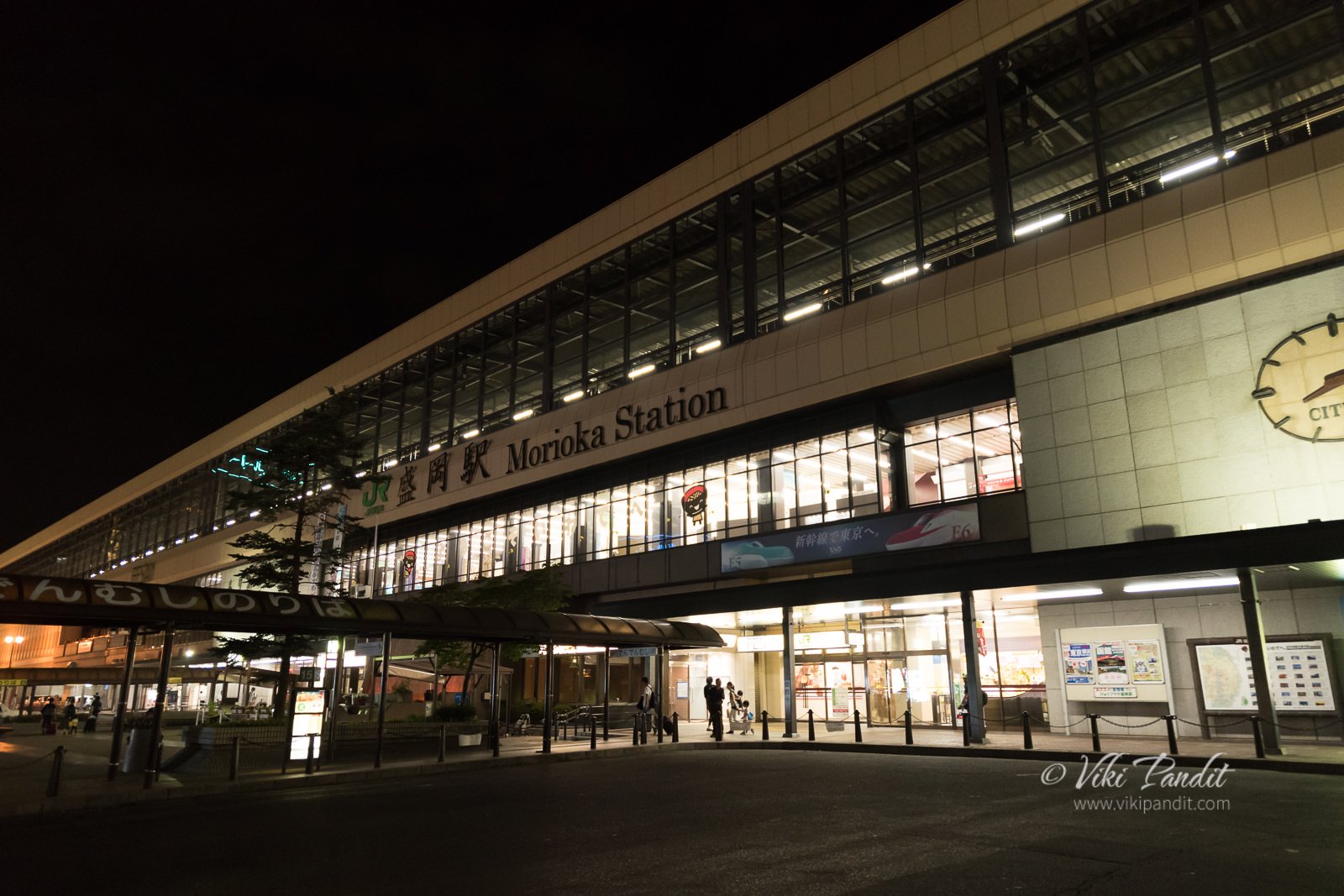Today we ride to the scenic Jodogahama Beach. Jodogahama Beach, or “Paradise Beach,” with its series of rock formations is one of the most popular places of scenic beauty along the Rikuchu Coast in the Tohoku region of northern Japan.
Morioka to Jodogahama Beach
Sun was already beating down on us as we walked down to the Morioka Station from our hotel. Summer has been strangely hotter this year.
While much of Japan is easily accessible by train, there are a few areas like Miyoka, that take a bit more effort to reach. This area was greatly effected by the big Tsunami of 2011 and rail services in the area have been greatly affected.
The JR Yamada Line connects Miyako and Morioka, but train service has not resumed on this segment of the line since 2011. Thankfully the roads and tourist facilities in the area have been restored, and while some diversions are in place, the area is now easily accessible via the Iwate Kenpoku Bus.
At Morioka station, the tourist information volunteers happily pointed us towards the Bus ticket counter.
I was carrying my JR Rail Pass and they didn’t charge me for the round trip bus ride. For Mani, it cost her ¥2000. The #106 Bus run by Iwate Kenpoku is scheduled at regular intervals of an hour and the easiest way to travel to Miyako, unless you have your own car, of-course. The bus stops near the East Exit at stop #7. We left for Morioka at 11.40 am. The bus was mostly occupied by local residents traveling to Miyako.
Sanriku Fukko National Park
During most of my travels, I have been treated to a Japanese landscape, adorned with wide areas of paddy fields. However, the Iwate Kenpoku bus travels through the dense forest of Sanriku Fukko National Park. Once past the outskirts of the town, the road leading to Miyako is bounded on either side by woodlands, rich in an endless variety of foliage.
The Sanriku Fukko National Park incorporates two former parks: Rikuchu Kaigan National Park and the Minami Sanriku Kinkasan Quasi-National Park. On the way the bus stops at Yoho for a 10 minutes break. Passengers can get down to stretch their legs or if they want, obtain some snacks or drinks from the store.
The lovely road kept on going and we finally reached Miyako at 1.55 pm.
Miyako City
From Miyako, we needed to take another bus for a short 20 minute ride to the beach. From stop #3 buses leave hourly for the Jodogahama beach and get there in about 20 minutes. While waiting for the bus, I wandered around to have a look at Miyako Station.
The station was mostly deserted since tourists stick to the bus service.
Mani went ahead to the information booth at the station and obtained the bus timetables for our return journey.
Miyako is a small city of approximately 60,000 people. I would say the only reason I was here was to experience Jodogahama beach. The area of present-day Miyako was part of ancient Mutsu Province, and has been settled since at least the Jomon period. On March 11, 2011, Miyako was devastated by a tsunami caused by the 2011 Tohoku earthquake. During the tsunami, waves reached at least 37.9 metres above sea level, almost equaling the record of 38.2 metres created during the 1896 Sanriku earthquake tsunami. It left behind a huge devastation, the city is still recovering from.
The afternoon was getting hotter by the minute and we were thoroughly relieved to see the bus arrive that would takes us to the beach.
The bus dropped us and our fellow passengers at the parking lot of the Jodogahama Visitor center. Below the parking lot we followed the road directly to the Jodogahama Beach. A rest house is located nearby where you can use the toilet or buy food and drinks.
Alas it was a Sunday and the beach was full of sun-bathing tourists. Walking along the pebbled beach we tried but failed to find a decent spot to rest for a bit.
Jodogahama Beach is Sanriku Fukko National Park’s hallmark spot, thought to have been formed around 52 million years ago in the Paleogene period. These white volcanic rocks that from the bay cut it off from the open sea and tame the waves that hit the shore.
These groups of Paleogene period volcanic rock formations have been weathered by wind and rains into fantastic shapes. Evergreens like the Nanbu red pine, which is a symbol of the prefecture, grow atop these rocks, and the contrast with the white stone conjures up the beauty of a traditional Japanese garden.
Jodo Sect of Buddhism
Now Jodogahama means “Pure Land”, why it was named so is still a mystery for me. One of my Japanese friends tell me – “Jodo” means a place where people go to die. After some researching I found an article about the Jodo sect of Buddhism.
Founded by Honen(1133-1226), the Jodo(Pure Land) sect is based on the worship of Amida, the merciful Buddha of the pure land. The focus of this sect is to show the common folks how to be reborn into Amida’s paradise.
The name Jodogahama is said to derive from a seventh generation Buddhist priest of the Miyako-san Joanji Temple in the Tenna era (from 1681 to 1683) by the name of Reikyo, who, while admiring the sight before his eyes described it as “just like Amida paradise.” Over the years many have come to consider this vivid contrast of the sharp, white rocks, green pines, and deep blue sea to a Pure Land or Paradise.
Jodogahama Beach
We loitered around the Beach house area for a few minutes but then decided to walk towards a more quieter place.
The waters are a clear emerald blue and the white and vibrant, jagged rocks pierce the calm sea.
The Black-tailed gulls very have a nice time in the shadow areas.
We got into the water to enjoy the cool sparkling water. This beach is perfect for swimming as the sea is calm and the waters warm. Although you might feel the pebbles hurting your foot a bit.
Once the sun mellowed down, we walked along the beach. In many places the limestone rocks can be seen jutting out, creating magnificent shapes.
After walking for a bit we reached a tunnel.
The tunnel led us to Jodogahama Marine House where you can take a small fishing boat to see Blue Cave. So if you aren’t satisfied by just sitting on the beach and soaking in the sights then you can also opt for the Sappa boat cruise. This cruise goes inside Hachinoheana, the Blue Cave. Inside the cave is a blow-hole, which is said to bring good luck. The waters within the cave change colour depending on the season, so when you visit you may be treated to some stunning water. However we were late and the cruise had shut down for the day.
A bit further we found ourselves at the Miyako Jodogahama Boat Cruise pier. From here you can catch the 40-minute tour on the Rikuchu-maru Tour Boat will take you around the islands of Jodogahama.
Tategasaki Tower
We were finally back at the starting point of the trail near the visitors center. The bus was still some time away so I half-sprinted to one of the popular viewpoints at the beach.
From above one can view a wide area of the bay.
Jodogahama to Morioka
The bus took its sweet time coming. The parking lot has a cozy sitting area, so we rested there as we waited for the bus to come along.
A small queue had formed and we also joined it. The bus eventually came and took us back to Miyako station.
At Miyako, the bus that would take up back to Morioka was scheduled for 5.45pm. We still had some time on our hands and we were famished. Down the road we found a store and picked up some food for the way.
We sat in front of the JTB Travel Agency, from where the bus to Morioka was scheduled to pick us up. The bus picked us up at 5.45 and we were finally headed back to Morioka.
Surrounded by deep blue-green waters, Jodogahama Beach is a sheltered by a picturesque line of craggy, white rocks that mean it’s calm shallows are great place to swim in warmer months. It is indeed a great beach for swimming, with clean water and gentle waves. Make sure you walk around the cove, and view the rocky spine from a number of different angles, and there are many walking trails that meander around the area which lead to view points.
Pines cover the surrounding bluffs and crabs and small fish mingle in the the rock pools completing this beautiful scene, making this area worthy of the title “Pure Land” bestowed upon it by the Buddhist Monk Reikyo who felt he had reached paradise on earth when he visited. If you want a little bit of paradise whilst in Japan then Jodogahama beach is the place for you.
We reached Morioka Station by 8 pm. But it still wasn’t the end of day for us 🙂
Thanks for reading. Please leave me a comment if you liked the post or follow my story as we explore the Jomon period ruins of Sannai-Maruyama.
Disclaimer: The information presented in this article is based on the time I visited the premises. Note that there might be changes in the prices of merchandise and admission fees that might have occurred after this article was published. At times the facility might also be closed for repairs or for variety of other reasons. Kindly contact the facility or facilities mentioned in this article directly before visiting.
Usage of this site indicates acceptance of my Terms and Conditions.
Credits: The historical information presented herein is gathered mostly from local guides that were re-inforced via historical writings.







